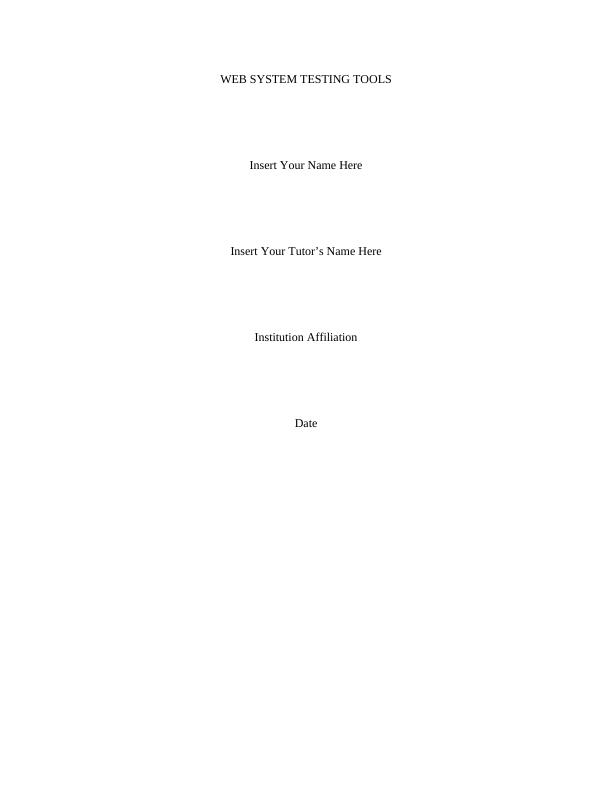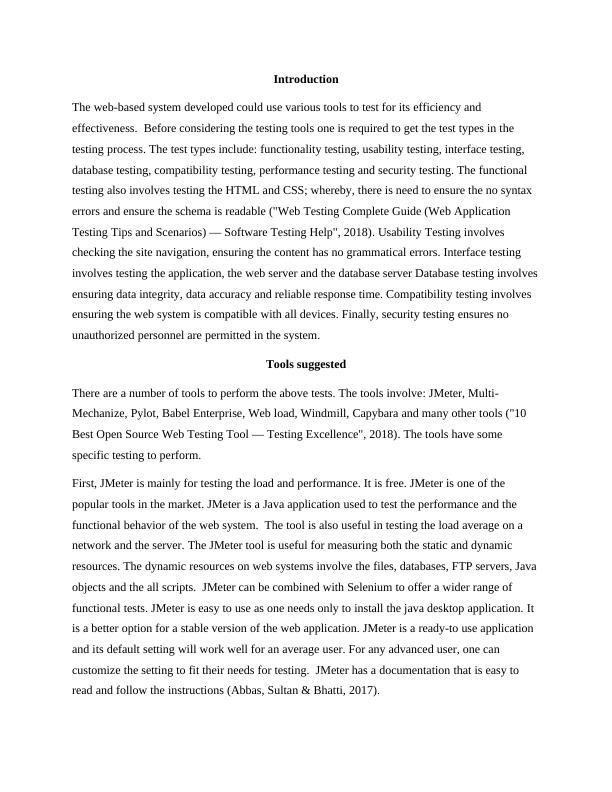Web System Testing Tools - Doc
5 Pages1186 Words172 Views
Added on 2021-05-31
Web System Testing Tools - Doc
Added on 2021-05-31
ShareRelated Documents
End of preview
Want to access all the pages? Upload your documents or become a member.
Database Testing and Consistency
|5
|1188
|420
Restaurant Web Application Development
|8
|1593
|56
Test Process and Plans | Assignment | Solutions
|5
|1595
|11
Difference Between Php and Java
|4
|1099
|346
Parameters Throughput Deviation
|6
|1625
|25
Web Application Development for Shore Project
|22
|2885
|488


